Australian Apocalypse: The Consequences of the Australian Bushfires
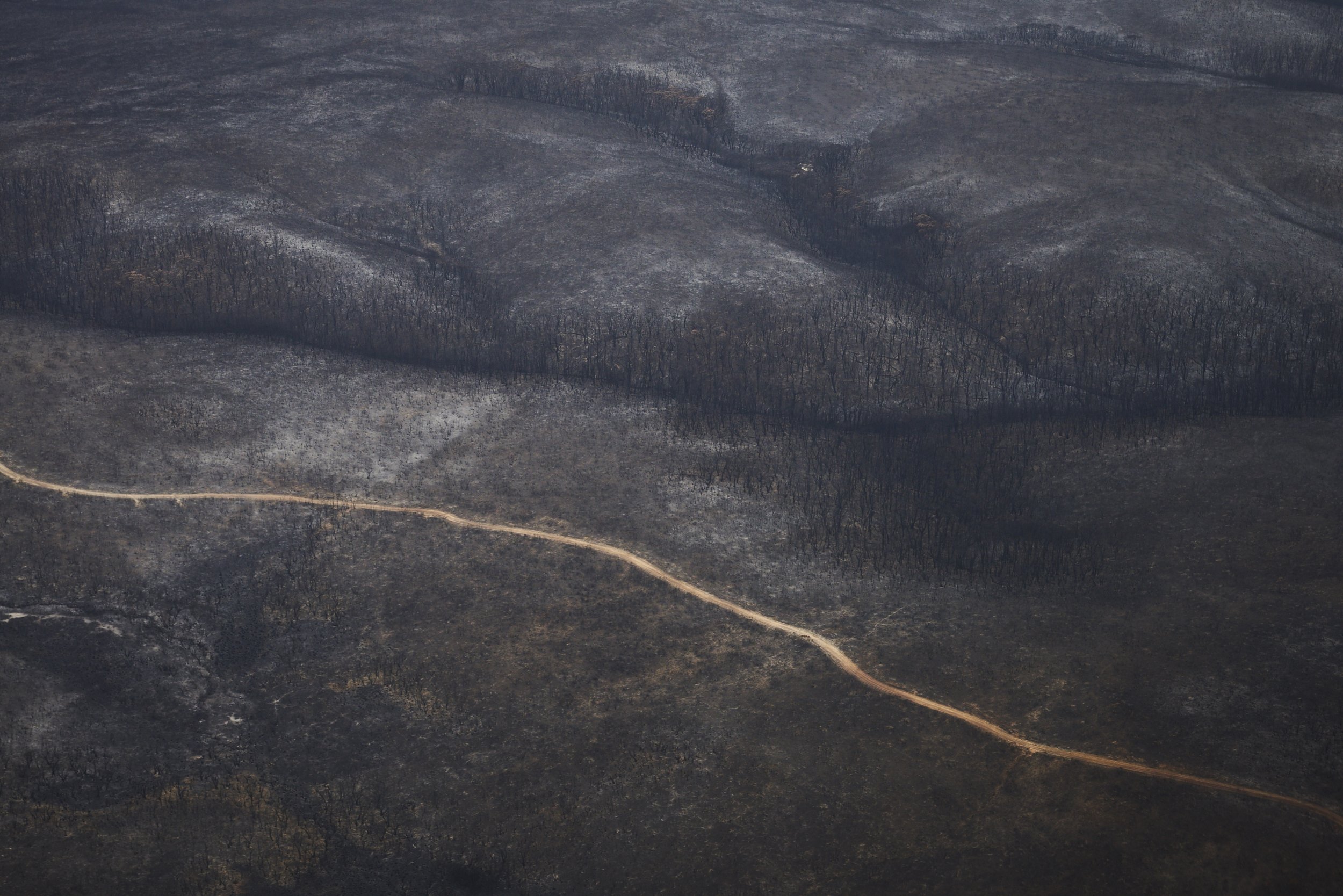
An aerial image of the damage the bushfires have done to Flinders Chase National Park on Kangaroo Island South Australia, Australia on Thursday the 16th of January 2020.

A kangaroo that survived the Australian wildfires fires only the day before in Waterholes, Victoria, Australia on Monday the 6th of January 2020
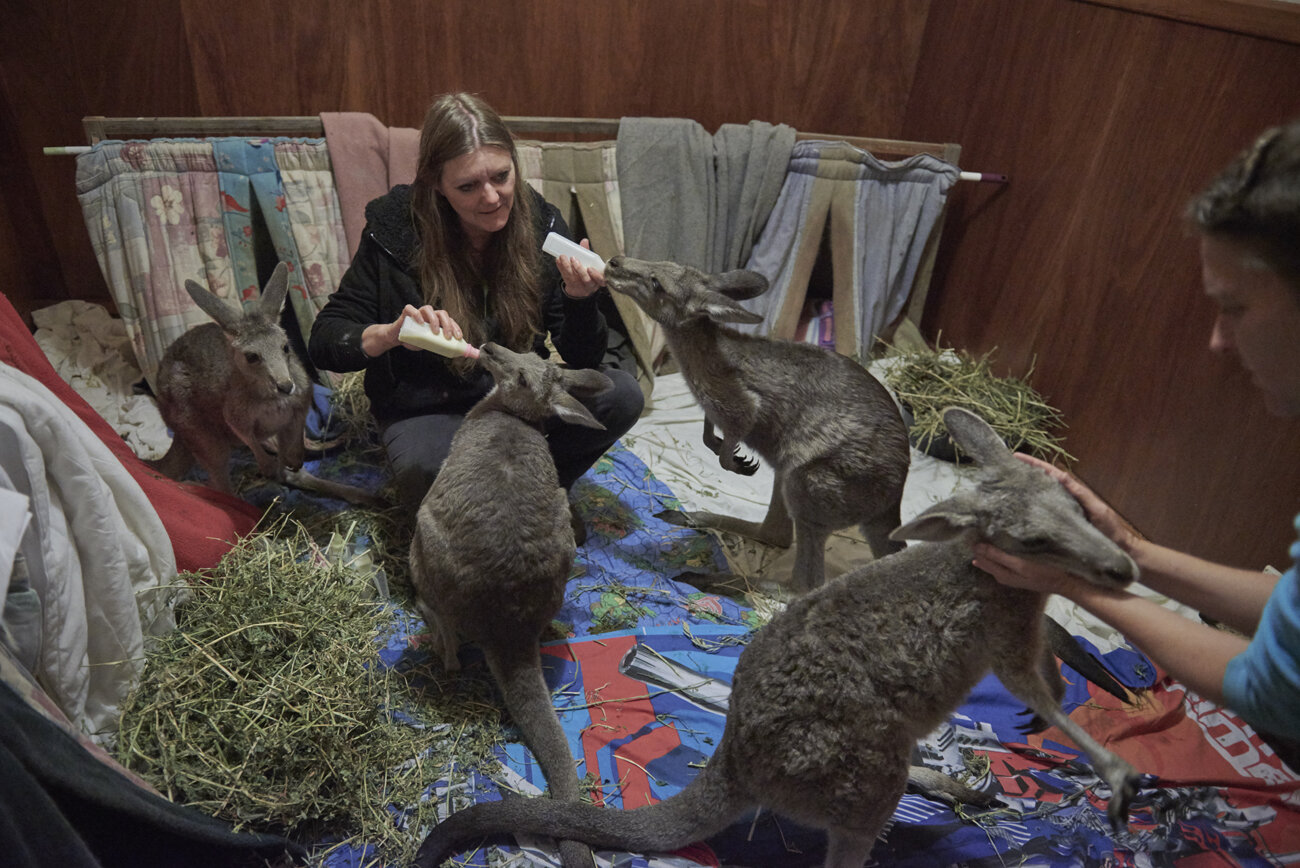
Susan Pulis, a wildlife carer and the founder of the Raymond Island Koala and Wildlife shelter, which recently moved to Waterholes and Wendy Hendrickson feed five of Susan’s kangaroos, in Wendy’s spare bedroom transformed into a temporary shelter for the 5 kangaroos on Raymond Island, Victoria, Australia on Monday, the 6th of January 2020
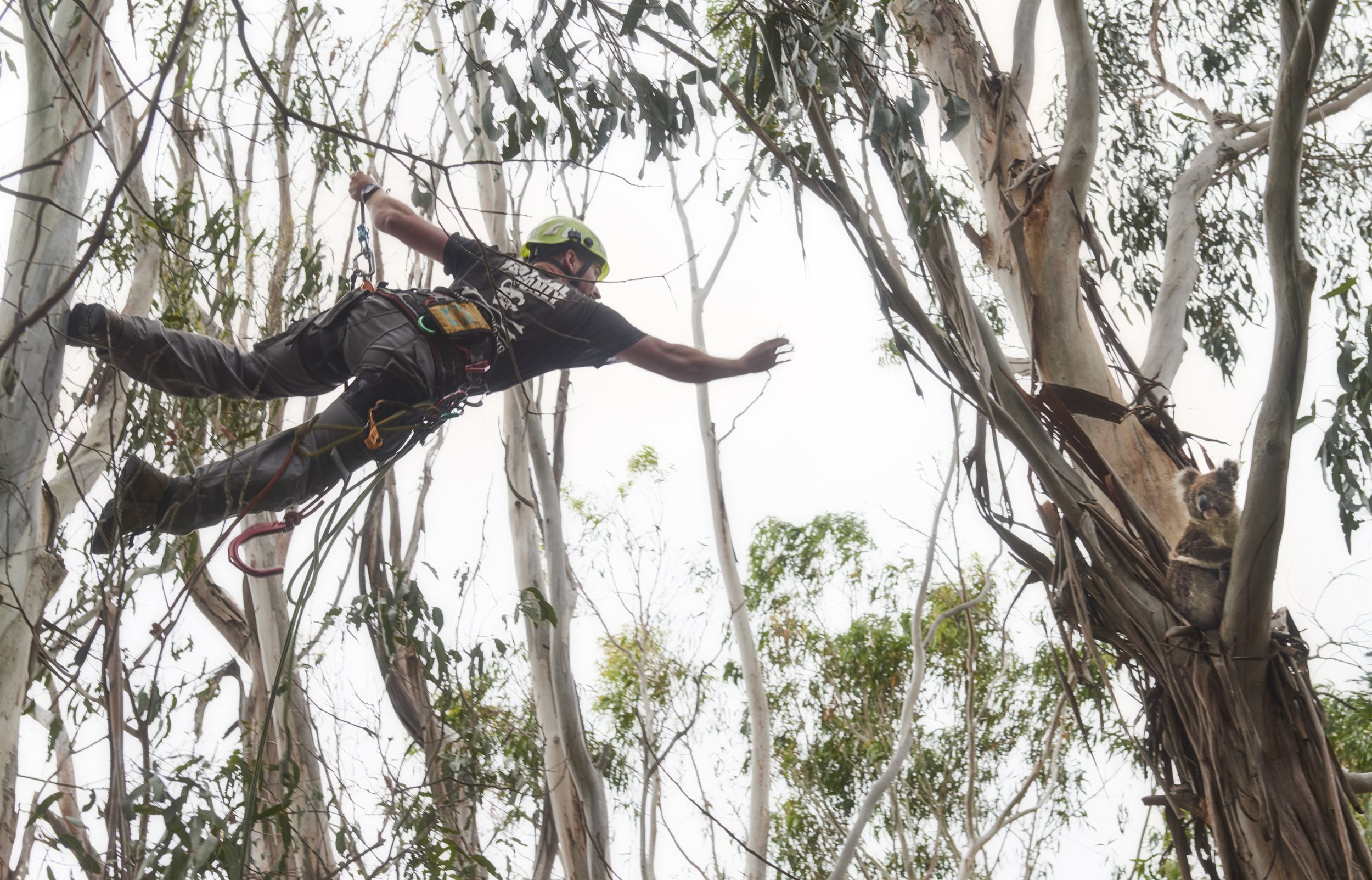
Kai Wild, a professional arbourist, rescues an injured koala from a tree in Kangaroo Island, South Australia.
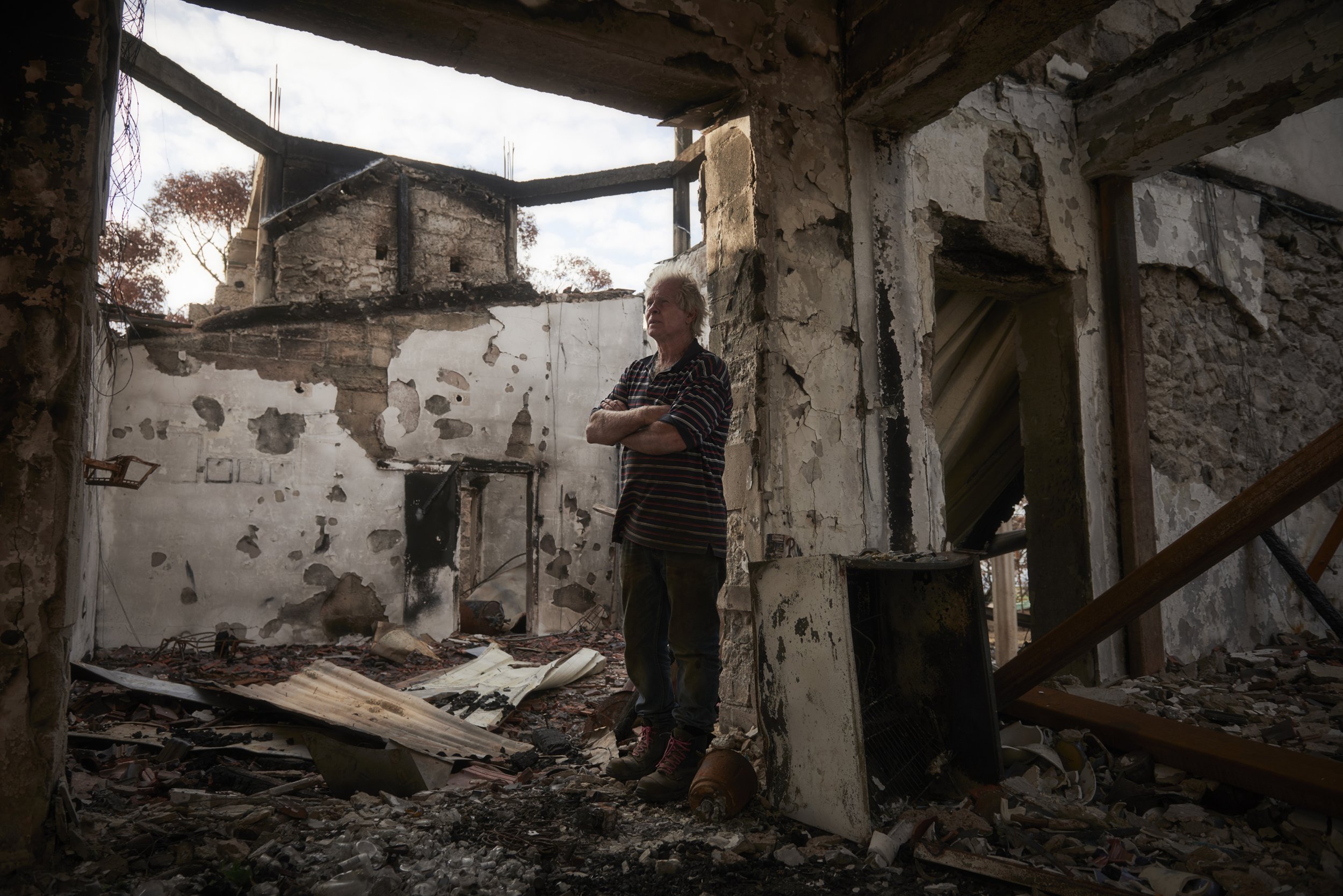
Paul Stanton surveys his home in March 2020 as his new reality still is difficult to accept, months after the fires destroyed his home. “I started building it 46 years ago; it was nearly finished. I had even kept some of the walls from the original cottage I grew up in. This house had so much love in it,” Paul says sadly. Gone are the countless hand-me-downs and family mementos. Gone too are the animals from the sanctuary. “That’s the hardest thing,” he says quietly. “That’s why Katja has trouble coming back – she can picture exactly where all the animals were in the house.” Kangaroo Island, South Australia March 2020.
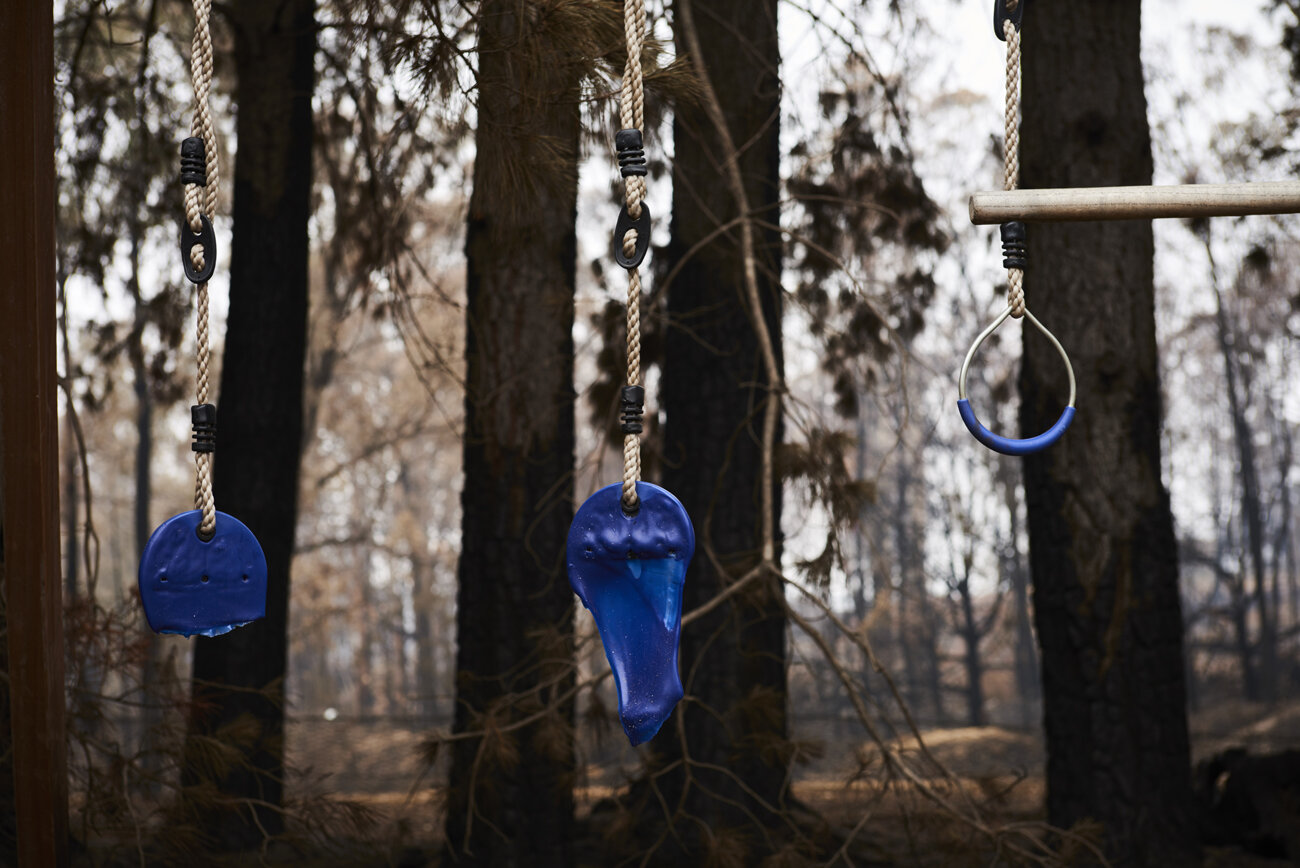
The remains of a swing set on a property destroyed by the bushfires in Sarsfield, Victoria Australia on Tuesday the 7th of January 2020.
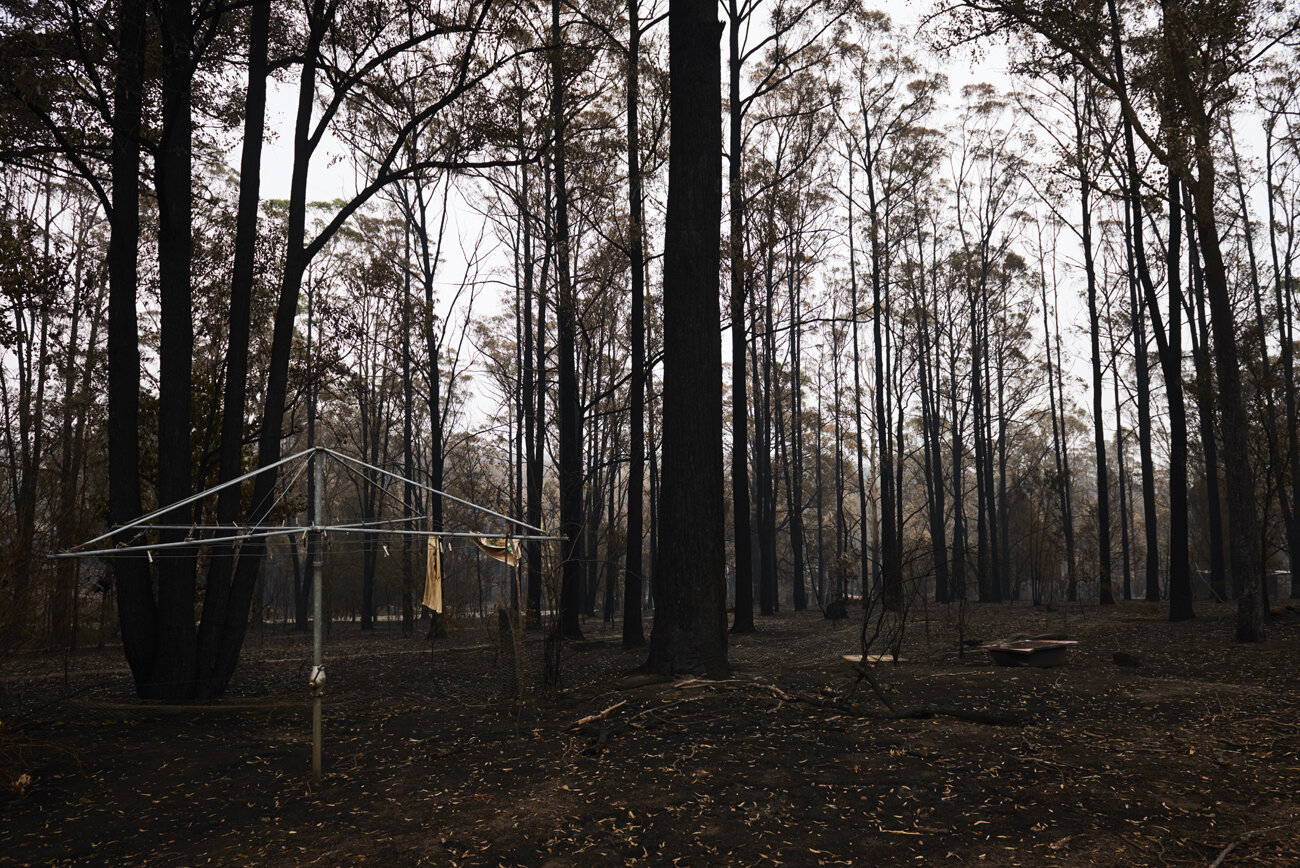
The remains of a property destroyed by the bushfires in Sarsfield, Victoria Australia on Tuesday the 7th of January 2020.
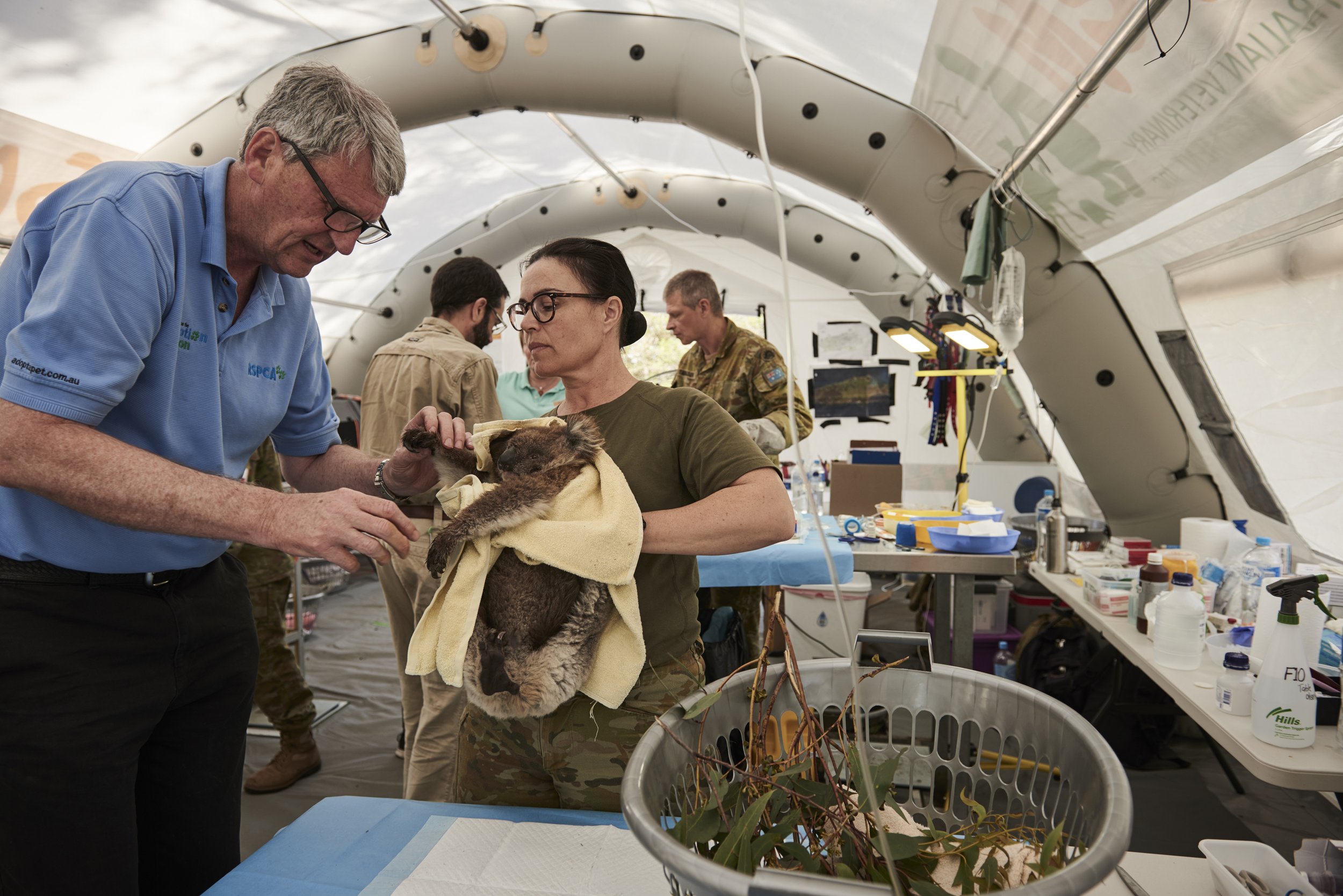
A rescued young Koala is held by Australian Defence Force Lt Susie Rattigan while RSPCA volunteer Brad Ward inspects the Koala for injury in a makeshift triage tent at Kangaroo Island Wildlife Park & Aquarium on the 15th of January 2020
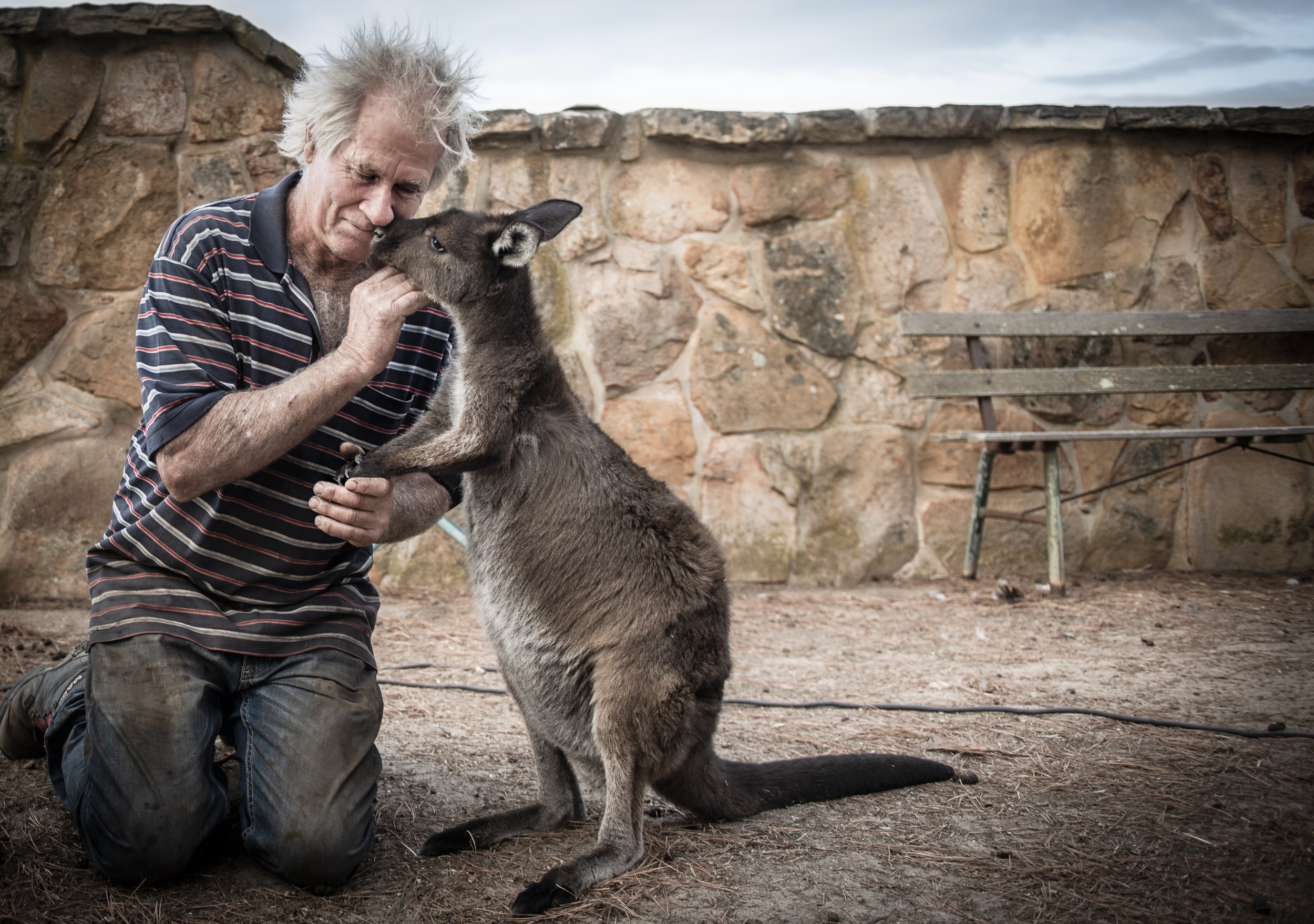
Paul Stanton takes a moment with one of his surviving kangaroos. Gone, too, are the animals from the sanctuary. “That’s the hardest thing,” he says quietly. “That’s why Katja has trouble returning – she can picture exactly where all the animals were in the house.” Kangaroo Island, South Australia March 2020.
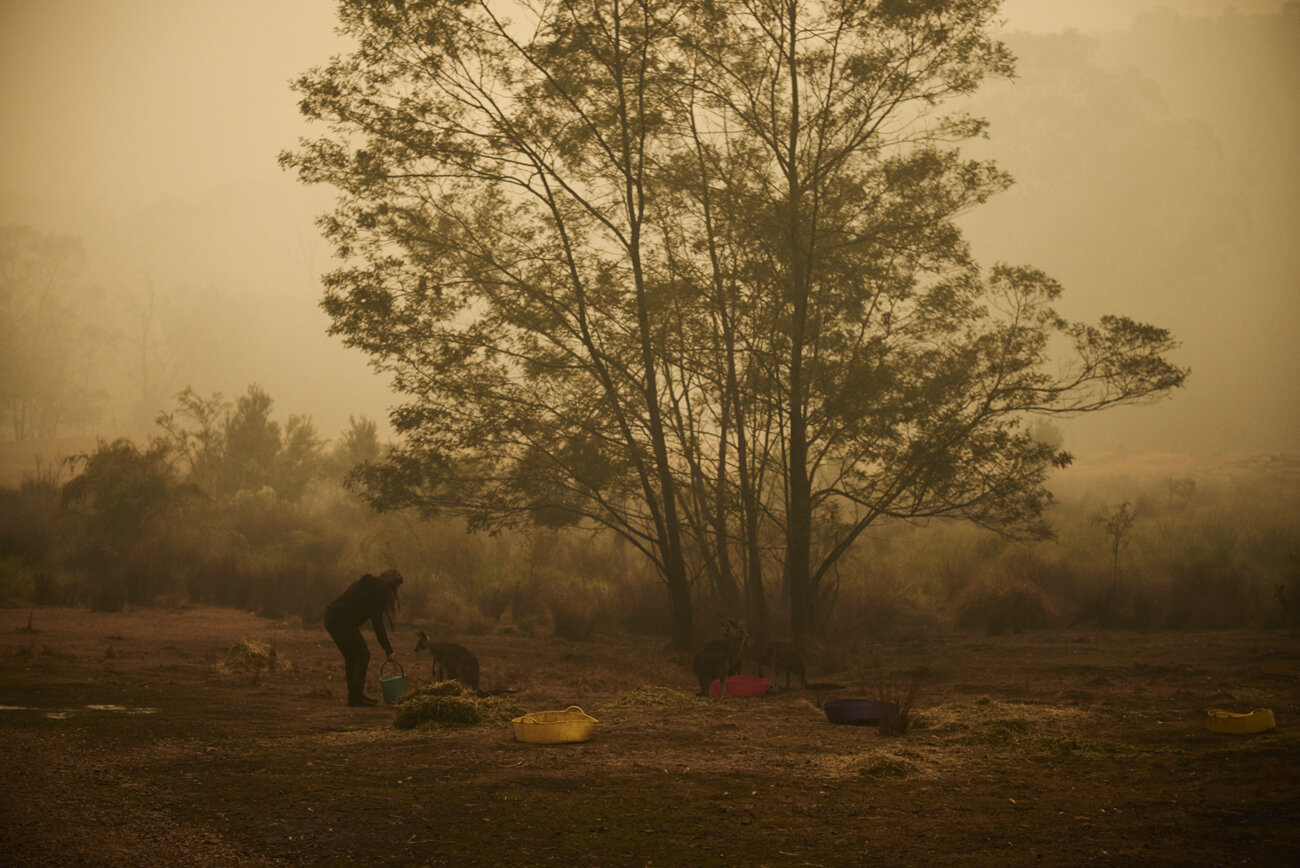
Susan Pulis, provides water and care to traumatised Kangaroos that survived the fires. Susan Pulis, a wildlife carer and the founder of the Raymond Island Koala and Wildlife shelter, in Waterholes,
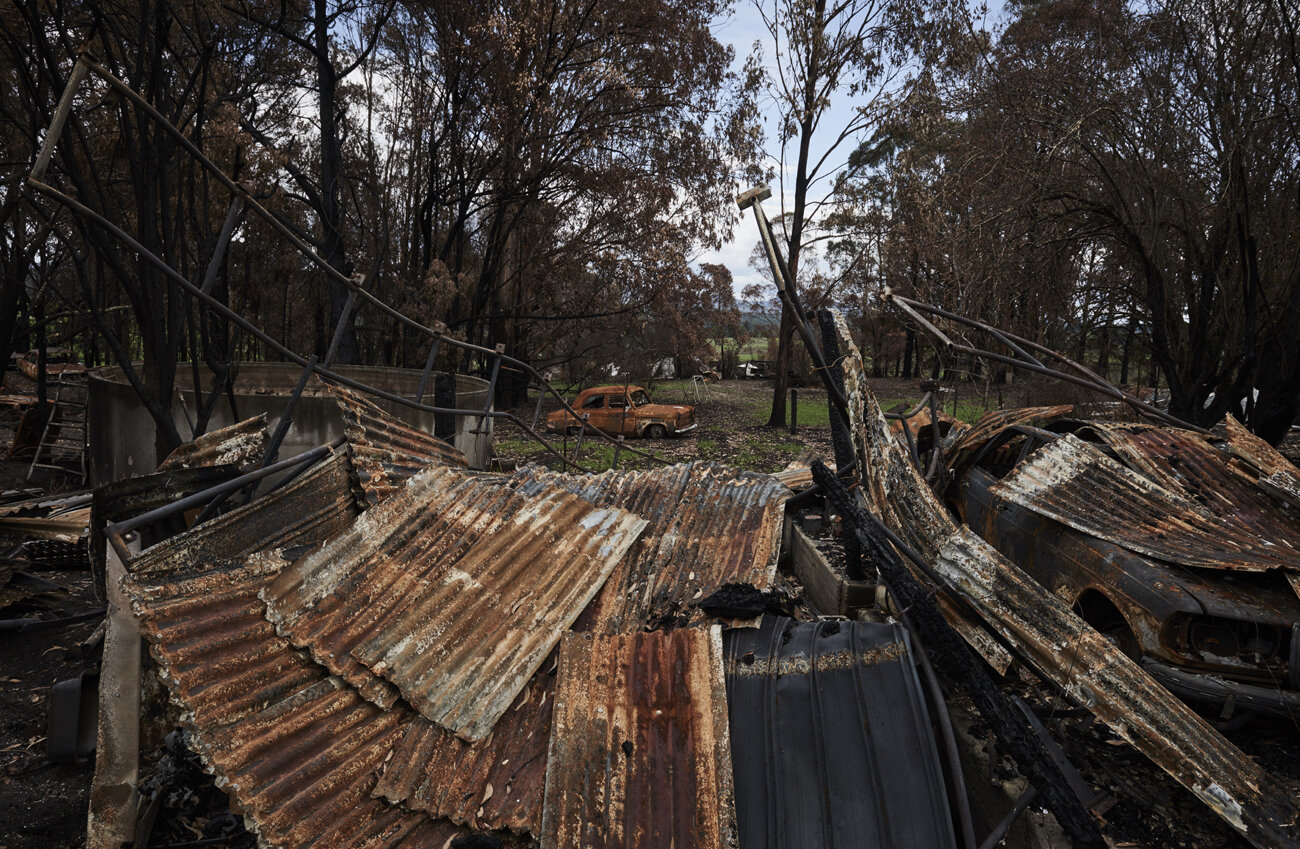
The burnt remains of a property destroyed by the fires that hit Clifton Creek, Victoria Australia on Friday the 24th of January 2020.

American Kelly Donithan, a Humane Society International Senior Specialist in disaster response rescues a severly injured Tammar wallaby in the bush about a 45 minute drive west from the Kangaroo Island Wildlife Park & Aquarium, where she will take him to be euthanized on the 15th of January 2020.

Simon Kelly at one of the several pits he has had to dig to bury all of his sheep. Of 9000 he has had to bury more than 5000 of his sheep. This pit has two of his cows and a couple dozen sheep in it.
This group of sheep have mostly died more recently since the fires due to lung damage from smoke inhalation, on Thursday the 16th of January 2020, on Kangaroo Island, South Australia, Australia Jason Wheaton and his sons came to Simon’s property to help him clear the burnt land of deceased animals and fallen trees as well as any other things he might need help with since the fires. (This speaks to the community support that has gathered around the people who have lost so much.)

A kangaroo mother and her baby joey perished together from the Australian bushfires on Kangaroo Island on the 15th of January 2020.

A mob of kangaroos that managed to survive the fires gather for a feed at Stokes Bay, Kangaroo Island, South Australia, in March 2020. Paul Stanton’s been taking in orphaned wildlife since he was a boy. In his distinctive high-pitched yell, he calls out into the wind, cutting open donated bags of fruit, vegetables and kangaroo pellets. Almost immediately kangaroos and wallabies tentatively emerge from every direction and before long a mob has gathered. There must be at least 100 kangaroos. It’s a blessing to see them in such numbers, given the devastation of their population.
Words by @anastsaf

Burnt out bush as a result of the Australian Bushfires on the road to Waterholes, Victoria, Australia on Monday the 6th of January 2020

Trees begin to show regrowth two months after the wildfires on Kangaroo Island razed its luscious landscape. Kangaroo Island, South Australia, March 2020

















Australian Apocalypse: The Consequences of the Australian Bushfires
The late 2019 to early 2020 bushfires ravaged over 10 million hectares of Australia, killing nearly 30 people and an estimated half a billion animals. The country was left in a ravaged state, which strongly suggests our climate crisis is at a tipping point. The series shows the devastation these bushfires left behind.